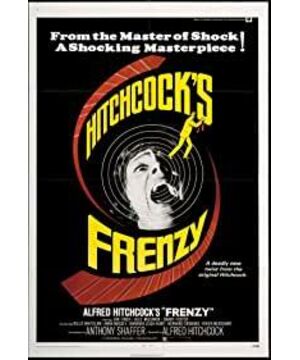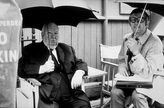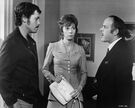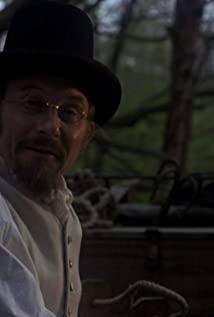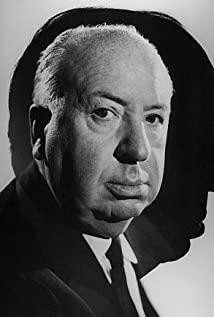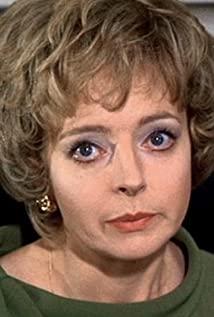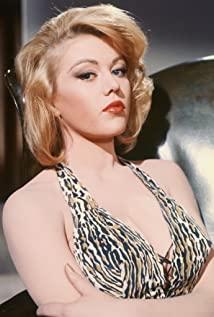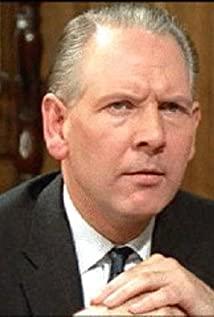Against the irony of some overly solemn opening music, the film entered the main tone of Hitchcock-style thriller and black humor at the beginning of the film: a gentleman introduced to everyone on the banks of the Thames the beautiful city of London. , And did not forget to sing a few hymns for the hard work of the government. The people gathered around really immediately saw what this person called the "unforgettable scenery": a naked female corpse floating on the river! It was learned from the sensational public opinion that she was the new victim of the terrifying "tie series of murders." The camera then turns to the next paragraph. The man is wearing a tie... Here, Hitchcock uses what a film critic David Podwell calls the "hook" technique in classical films. Its function is to guide the audience's psychology: deepen your perception of the nature of the case through the previous dialogue, and the man in the tie that appears in the next scene is inevitably regarded as the murderer in the subconscious mind.
The host announced that Lanney had just hinted that he would appear on the stage. Even worse, he was subsequently fired by his boss. The reason for the dismissal did not make anyone sympathize with him: as a barman, he drank the wine on the counter very lacking professional quality. And then in the paragraph of his conversation with his fruit-selling friend Roscoe, Hitchcock added a plot that may not have been paid much attention to at the time, to strengthen the implication of Britney’s criminal identity: the patrol from the side When he walked, Rothko greeted and talked with him very warmly. But when he remembered that there was Britney on one side, the camera turned his gaze. The latter is gone. Why did Britney go? Is he afraid to talk to the police? Why are you afraid? …Actually, the performances of the actors in the camera are all neutral, which is the thinking of the audience who has been controlled by Hitchcock!
If the passage related to the pursuer is still slightly obscure, then the subsequent meeting with the potential victim, his ex-wife, clearly strengthened the audience's suspicion of the male protagonist. Britney was not only rude in his ex-wife's matchmaking office, but he also lost control at the club dinner, breaking the glass and stabbing his finger. But just when everyone was getting closer to treating Britney as the real criminal. Strange peaks of the story emerged, and what happened after Roscoe came to the intermediary made everyone suddenly realize that Britney was innocent!
Why did Hitchcock change the tradition of the "innocent" movies in the past, instead of stating that the protagonist was wronged at the beginning, but instead leading the audience to think that he is the murderer? Personal speculation may have something to do with the historical and cultural changes in British society. The old social and cultural forms based on the traditional hierarchical system have long since died out after World War II. The British social reality in the 1970s could no longer provide the classical style of reality that Hitchcock loved. At the same time, because local actors have also turned to methodists and civilians, lacking the charm and strong box office appeal of old-school movie stars such as Gary Grant and Ingrid Bergman, Hitchcock cannot be like that. In the past, the big-name celebrities guide the audience to empathize with the characters. In other words, the objective environment no longer allows him to make purely "innocent people" films such as "North by Northwest" and "Thirty-Nine Steps".
In the subsequent scene in which the female staff found out that the boss was killed, Hitchcock demonstrated his extraordinary narrative and suspense-making skills. There must be three roads to the building of the dating agency, and Roscoe left the main road after the assault.
Britney then walked from the back road. There is no possibility that the two will meet each other.
And when he found that the door was locked and left, the female clerk who had finished lunch happened to come back and saw Britney leave (the direction she turned to ensure that she could see his face). The time-space relationship is very precise and clear.
Subsequently, the suspicious female staff member entered the building. Notice! Here, Hitchcock did not follow up the whole process of showing that the female staff went upstairs, opened the door and entered the house, found the body and screamed. Instead, the empty camera remained motionless at the door of the building for "a long time".
Why is it so? One aspect is obviously to avoid repetition. Because just showed the process of Britney going upstairs and knocking on the door. On the other hand, and most importantly, this is a kind of "delayed" suspense technique: the audience who already knows all the insiders, the more eager to hear that scream at this time, the more the director makes you wait, and still An invisible "long" wait will suffice your appetite! Although, judging from the actual time span, this empty shot may not necessarily take longer than the female staff need to complete the action. But the audience, who has become accustomed to shortening the process of character behavior through editing, obviously still has a certain sense of anxiety. And this is exactly the mental state that the director wants. Although Hitchcock is a standard genre film director, although the works he shoots generally have similar structural features, he is always innovating, trying to express those relatively routine paragraph plots in a more novel and unique way. . It is also a "found that the master was killed and screamed". In "Thirty-Nine Steps", the maid's screaming transitions comically to the siren of the train, but in this film it becomes an extended version of the people. Anxious empty footage.
Hitchcock said in a speech to the United States in early 1930 that Griffith showed that the guillotine saves people is a speeding horseshoe and the scene of the execution ground is constantly changing to create an atmosphere of tension. What he pursues is to show only one side. On the other side, it is to make an audience anxious, "Did they get on the horse and set off?" The scene where the Branney Hotel escaped danger gave a more perfect interpretation of the above suspense technique. The camera followed the woman to get up, put on her socks and went into the bathroom, then panned to the door shortly, giving a close-up of a newspaper. Then he went to the hotel counter. The lady boss was also reading the same newspaper, and found that the police wanted him and the newly arrived guest had the same characteristics, so she called the police. Note that the camera has never returned to the house since then. Although the audience was eager to know whether Britney saw the newspaper tucked under the door, eager to know whether he could escape before the police arrived. But the director just doesn't use the content of the screen to satisfy you, just to make you anxious. The tension was not released until the door was opened: the bed was spread out with newspapers, and people had already escaped.
Next, the killing of Britney's girlfriend is another perfect combination of horror, suspense and omission. The quarrel with the boss in the bar must not be in the back room, because it must be heard by others. After learning that the boss called the police, she resigned and walked out of the bar anxiously, with a close-up of her head. Then a voice suddenly sounded: Is there a place to go? The woman was startled, turned her head to let go of the picture, and replaced it with a close-up of the murderer Roscoe. This time the audience was taken aback! The perfect mirror!
The audience then began to be anxious for the woman, and Hitchcock instead added a "nonsense" follow-up shot at this time to prolong the tension. When we got to Rothko's room, the camera suddenly became negative and stopped at the corner of the stairs. Why not follow up? Because it is no longer necessary. The murderer must be prepared to commit an attack, in order to give you more reason to infer this conclusion. The lines Rothko said before entering the door were the same as before he committed the crime in the office: You are the kind I like...all omitted later. But Hitchcock did not omit emotions. The audience's release from anxiety to disappointment (the killing of women) was given a sufficient buffer: the camera did not simply fade out, but a longer retreat, retreated down the stairs, and exited the door. , Until the main street... has completed the most praised shot in this film.
The storyline surrounding the detective responsible for solving the case has almost become the only source of Hitchcock-style humor in the film. The laugh is of course the troubles caused by his wife's poor cooking skills. But a great script will never be humorous just for the sake of humor. The passages that show the detective’s family life must also be related to the main body of the crime. In addition to his wife’s intuition about crime, a woman who is much better than cooking, even inferior dishes have their own unique effects: do you realize that the difficulties the detective faces are similar to those of the murderer on the truck? similar? Here are the indivisible bird's claws and grapes, and there are the indivisible female corpses mixed in potatoes...Haha. But the most humorous lines in the film did not come from the couple. In the previous paragraph, two British men drinking in a bar mentioned the tie series murder case. When talking about the murderer’s criminal methods, the fat lady boss with bright eyes joined the discussion: Did he rape first and then kill? At this time, one of the gentlemen returned: No matter how bad things are, there are good things. Then there was the man's snicker. Although the lines in Hitchcock's films as early as the 1930s were full of black humor that satirized marriage and the relationship between the sexes. But obviously this is the darkest "color" ever. However, the social and cultural background of the filming mentioned above can justify this kind of sexual humor, and even the more criticized violent nude scenes: since the background of the story and the image of the characters are clearly secularized And the characteristics of the populace, so why demand that Hitchcock's shots and lines still maintain the implicit and restrained classical style? Isn't the form and content to pursue unity?
The suspense technique of "result before cause" usually makes the audience have a sense of curiosity about the behavior of the characters, and then they are interested in paying attention to the development of the plot. This technique mostly appears in "Whodoneit"-style detective dramas, but it is rarely used in Hitchcock films where empathy and anxiety are the main suspenseful techniques that emphasize audience foresight. But it appeared twice in this film. The first is the unfortunate arrest of Britney. Rothko's behavior was somewhat unexpected. He greeted the desperate Britney to go home and leave. In a few moments, the police came to arrest Branney, and then the camera switched to Roscoe talking to the police outside the house. The audience knew the "reason" at this moment: he betrayed Branney. But it makes sense, as it should have been from his standpoint. Note that Hitchcock did not simply use "results before reason" in this paragraph, but cleverly combined with the tension technique that he is good at: in the earlier paragraphs, careful audiences will notice that when Roscoe When he suddenly discovered that the brooch was missing after handling the corpse, his first reaction was to open the bottom drawer of the closet to look through the woman's bag. At this time, when Roscoe left with an excuse, Britney was relieved to pour a glass of wine and glanced through Roscoe's wardrobe. He opened the first drawer and closed it. Open the second one... Did you suddenly have some expectation that Britney could find the woman's bag and infer that Rothko was the real murderer? ! Haha, the cunning Hitchcock doesn't give you such an opportunity. At the critical moment, the police rush in! The second application is Britney’s fall. The motive for this behavior was not given until he fled for revenge.
There are also topics to be said about the end of the film. Since the identity of the murderer has been revealed through the potato flour follow-up investigation, why does Hitchcock still join the story of the protagonist fleeing the hospital for revenge? Only after seeing the last shot did I understand: All designs are for returning to traditional services. Recall the end of "Telephone Murder." The detective told Kylie and the audience all the ins and outs. Then he said that if her husband, Le Milano, opened the door with the key, then he was the murderer. As a result, the audience waited for this scene together with the detective and the victim. At the end of "Beauty", which Roger Albert calls one of the best in film history, Rains was taken away from Grant by Bergman and turned away from the car. At this time, the Nazi comrades in the house "please" He went into the room and talked. Desperate Rains lowered his head and walked up the steps with his leaded legs. The audience can already guess what the ending will be waiting for him after closing the door. What Hitchcock wants at this moment is this implicit and evocative classical ending. So the three people in the film must appear in the scene in that order in the end. The murderer must be the last one! After the door was closed, the detective was responsible for giving the black humorous conclusion: "Mr. Rothko, you forgot to wear a tie..."
Article with pictures: http://www.mtime.com/my/hitchitsch/blog/986509/
View more about Frenzy reviews


